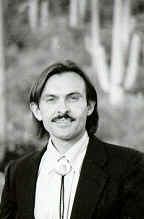Yesterday evening we journeyed to a rustic camp which doubled as a conference center. Our task was to share Cherokee bodywork and energy medicine with our hosts and their constituents. In years past we had learned that this work was very familiar to Maori and Australian aboriginal people who practiced similarly. Apparently, all indigenous people developed forms of manual or touch therapies and their own versions of energy medicine. Some persist; others have not. I have not been able to find any Lakota manual therapies, but I was able to find practitioners of Cherokee bodywork from whom I could learn this art. I couldn't find any bodywork practices among the Cree of Saskatchewan though they have well developed energy medicine. The Hawaiians still practice lomilomi, and a watered-down, non-spiritual version has been co-opted for use in spas and resorts on the Islands. The Zuni still practice what looks every bit like high-velocity chiropractic adjustment, and students of Native Studies point out that Palmer, the developer of chiropractic medicine, was well familiar with the healing practices of the Native people of Iowa, as was A.J. Still, the founder of American osteopathy, for his region of the country. I have heard scholars surmise that he learned much of his techniques from the Pawnee people for whom he was the physician for years, though I have not independently confirmed that.
Our goal was to stimulate the people to remember in the same manner that Richard Harris did for the prairie peoples of Saskatchewan and Alberta. In 1960, Canada made ceremony permissible again after its having been outlawed for years through the Indian Act. (The U.S. followed suit in 1978.). During the 1960's and the 1970's, Harris, a Shoshone man from Wyoming, traveled around the prairies teaching people how to do ceremony in his way. He told them that their knowledge was not lost. Their ancestors remembered. If they would begin doing ceremony in his way, their own ancestors would come to them in dreams and visions and correct them until they would be doing ceremony in their way. The people believed Harris and this is indeed what happened. Now the Cree, the Bloods, the Blackfoot, and the other peoples of the Eastern prairies of the Rocky Mountains have recovered their own ways. Our goal in this part of Australia was to show people our way of doing manual therapies, understanding that their ways would return as they tried our ways.
Cherokee bodywork (or osteopathy) has been practiced for hundreds of years, though fewer and fewer people know about it. When I gave a talk in Tahlequah, Oklahoma, the Capitol of the Cherokee Nation (Western), only about 20% of my audience had every experienced it, and that was around 1990. It's probably less now, which is why I am trying to preserve it and to practice it and to keep it alive. Christianity had something to do with its relative disappearance, since the Christian traditions of Oklahoma frowned on healing activities that involved touch or energy, except for the laying on of hands, the anointing with oil, and the use of prayer. Similar forces were at work among the very Southern Baptist people of the Eastern Band of Cherokees in Cherokee, North Carolina.
When I teach Cherokee bodywork, I break it down into breathing, large joints and muscles, then smaller joints and muscles, then reading energy and finding points to work, and finally energy medicine. We began with the breath. I told a story about one of my teachers who said, "everything you need to know about the breath, you can learn from a dead cat."
The proper response is, "How so, Uncle?"
Then he would hold forth with his explanation. "Dead cats are heavier than live cats," he would say. "That's because the breath brings spirit into your body and spirit is always striving to return to the heavens from which it came. Spirit brings lightness into your body and being. When spirit fills your body, it lifts it toward the heavens, and you can stand up and resist gravity. When breath (and spirit) leave your body, you fall into a heap on the ground. Therefore, you should breathe fully and into every corner of your body, lest any part of you get too heavy to carry around."
Uncle gave good advice. We need to fully breathe with our entire thorax. We do well to imagine the breath traveling to every part of our body and filling our entire being with spiritual energy.
I began a demonstration with one of the participants. Her thorax barely moved at all. All of her breathing was happening in her abdomen with minimal motion of the ribs. It turned out that she did feel somewhat short of breath when she climbed stairs or hills. It made sense, because she wasn't fully filling her lungs.




